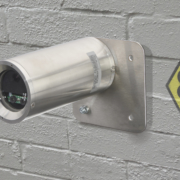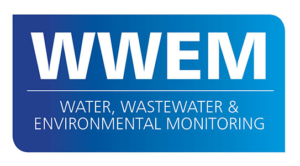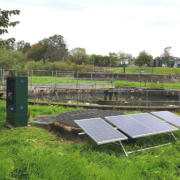A continuous water quality monitoring project has recently been completed on the River Kent near Kendal, in the UK’s Lake District. The monitoring was implemented for United Utilities by the environmental consultancy APEM, with Meteor Communications responsible for instrumentation installation and calibration, as well as real-time web-based data provision, event visualisation and reporting.
“Monitoring was required to help protect water quality during the operation of a temporary outfall pipe,” explains Joe Allaby, APEM’s Principal Aquatic Scientist. “The monitoring programme was a complete success, and I believe that water companies will be interested in this project because it represents a blueprint for the requirements of Section 82 of the Environment Act 2021.
“Multiparameter water quality monitors were installed upstream and downstream of a temporary discharge from United Utilities’ wastewater treatment works in Kendal to ensure that it did not negatively impact the water quality of the River Kent.
“Each monitor measured the key water quality parameters including dissolved oxygen, pH, temperature, conductivity, turbidity and ammonium. In this project, we were also required to measure un-ionised ammonia, because of its potential effects on sensitive migratory fish species such as Atlantic salmon (Salmo salar) and sea trout (Salmo trutta).”
Passing through the Lake District National Park, the River Kent flows for around 20 miles into Morecambe Bay. The River Kent is designated as a Site of Special Scientific Interest (SSSI) and a Special Area of Conservation (SAC). In the section of the river addressed by this project, two protected species were monitored: bullhead (Cottus gobio) and white clawed crayfish (Austropotamobius pallipes).
Kendal WwTW outfall
As the main treatment facility for the Kendal area, the WwTW services a large residential and tourist population equivalent of around 90,000, discharging to the River Kent. Prior to December 2015, the effluent outfall pipe from the plant passed under the river adjacent to the WwTW and discharged approximately 1.3 km downstream, but this pipe was destroyed by the flooding that followed Storm Desmond in 2015. United Utilities therefore constructed a temporary outfall structure to maintain the ongoing operation of the works.
The temporary outfall was located much closer to the works, in an impounded reach upstream of a weir, where flow rates were lower. Consequently, the Environment Agency required as a condition of the permit for the temporary outfall, that United Utilities carry out upstream and downstream continuous water quality monitoring.
The environmental consultancy APEM was tasked with the monitoring and protection of the River Kent at Kendal whilst the temporary discharge was in operation. “At first, this mainly involved ecological investigations to check the health of the river,” explains APEM Principal Aquatic Scientist Joe Allaby. “However, in 2022, continuous multiparameter water quality monitoring systems were installed to provide access to continuous data 24/7. This included an upstream monitor, and two downstream monitors; one in slack water and the other in turbulent water, to give us a complete picture of any potential water quality effects from the temporary discharge.”
‘Water quality as a service’
APEM’s expertise was employed in the identification of suitable monitoring sites, and Meteor Communications was contracted to install and maintain the monitoring stations under a ‘water quality as a service’ (WQaaS) contract. Joe says: “It would have been possible to purchase the monitoring equipment, but WQaaS is ideal for temporary contracts, because Meteor is then responsible for maintaining the equipment.”
Under a WQaaS contract, Meteor Communications installs the monitors and then visits the site every 4 to 6 weeks to swap in pre-calibrated sondes. Meteor’s monitoring stations, known as ESNETs (environmental sensor networks), are fully equipped with solar panels and remote communications technology, so that collected data can be automatically transferred to the MeteorCloud® platform, which provides secure data visualisation, analysis and alarms.
ESNET systems are available in kiosk or portable formats, and sondes can be located in-river or within flow-through chambers measuring water which is pumped from the river. The Kendal sondes were located in the river, fixed securely to local infrastructure. Continuous water quality monitoring data are stored in the sondes and transferred every 30 minutes to the MeteorCloud web portal, providing APEM, United Utilities and the Environment Agency with real-time access to water quality data.
Continuous water quality monitoring enables the detection of water quality incidents as well as the detection of trends. “In the past, our consultants have used portable instruments, but we are increasingly being asked for continuous data,” explains APEM’s Jack Hambridge. “So, our partnership with Meteor Communications has worked very well, delivering accurate, reliable data for us and our clients.
“In addition to the quality of the instruments, what really sets Meteor apart is their calibration service. They have invested in a bespoke calibration laboratory and a team of field engineers, capable of servicing large numbers of sondes so that data are accurate and the ESNET systems are maintained in optimal condition.”
Proactive maintenance
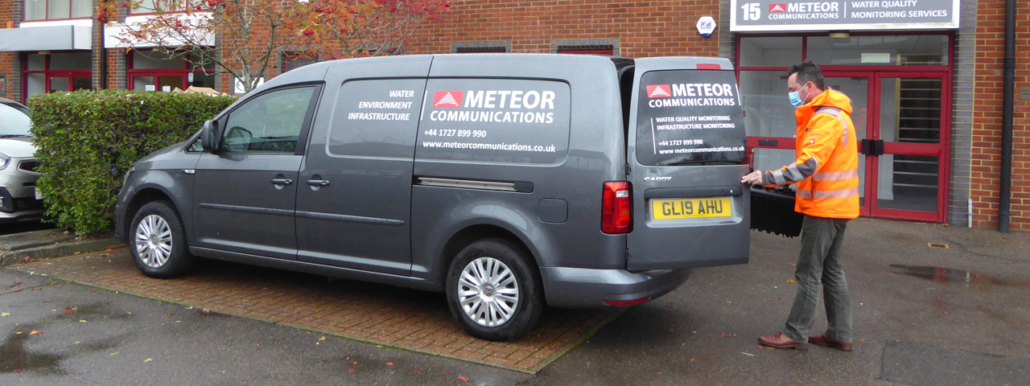
Operating from a dedicated calibration laboratory, a team of Meteor’s engineers maintain water quality monitors all over the UK.
Meteor Communications was responsible for maintaining the condition of the monitoring equipment, and checking the validity of the data to ensure a continuous dataset was provided for almost 2 years. In addition, APEM checked the readings three times per day, every day, as part of its proactive maintenance service, which, if measurements exceed pre-set values, could also include mitigation measures such as aeration and fish rescue.
With the benefit of Meteor’s monitoring systems, APEM also provided United Utilities with weekly water quality reports, and incident notices with visual checks when any of the pre-set measurement values were breached. “This was important for all stakeholders,” explains Joe Allaby. “Continuous monitoring with real-time access to data meant that the water utility, the regulator and local residents could all rest assured that river water quality was being maintained, and that a rapid response would be available if an alert was issued.”
Meteor Communications MD Matt Dibbs says: “This project exemplifies everything that a water utility would need to comply with Section 82 of the Environment Act, and with over 700 ESNET systems already installed across the UK, we have the scale of operations to help utilities comply with their obligations.
“In applications such as this, it is great to see consultants using their expertise to leverage the value of continuous water quality data. I should mention however, that our water quality monitors are being used in many different water quality monitoring applications beyond storm overflows. For example, ESNETs are also used for final effluent monitoring and catchment surveys, as well as short-term investigations and research projects.”
Results
With almost two years of continuous monitoring upstream and downstream of the temporary discharge at Kendal, the data demonstrated that there were no significant detrimental effects on water quality. “We did detect occasional breaches of the values that we set as early warning levels for response,” explains Joe Allaby. “However, these were usually found to be due to sediment, or due to a dissolved oxygen dip during warm periods in the summer.
“For us, the continuous dataset was essential because it gave us peace of mind when things were going well, and provided an early alert when conditions changed, and a rapid response was necessary.”

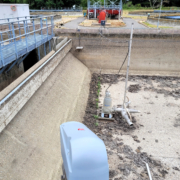
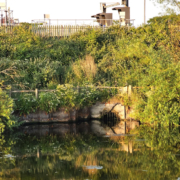

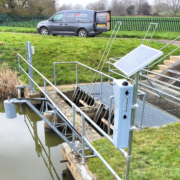
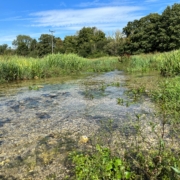
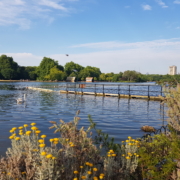
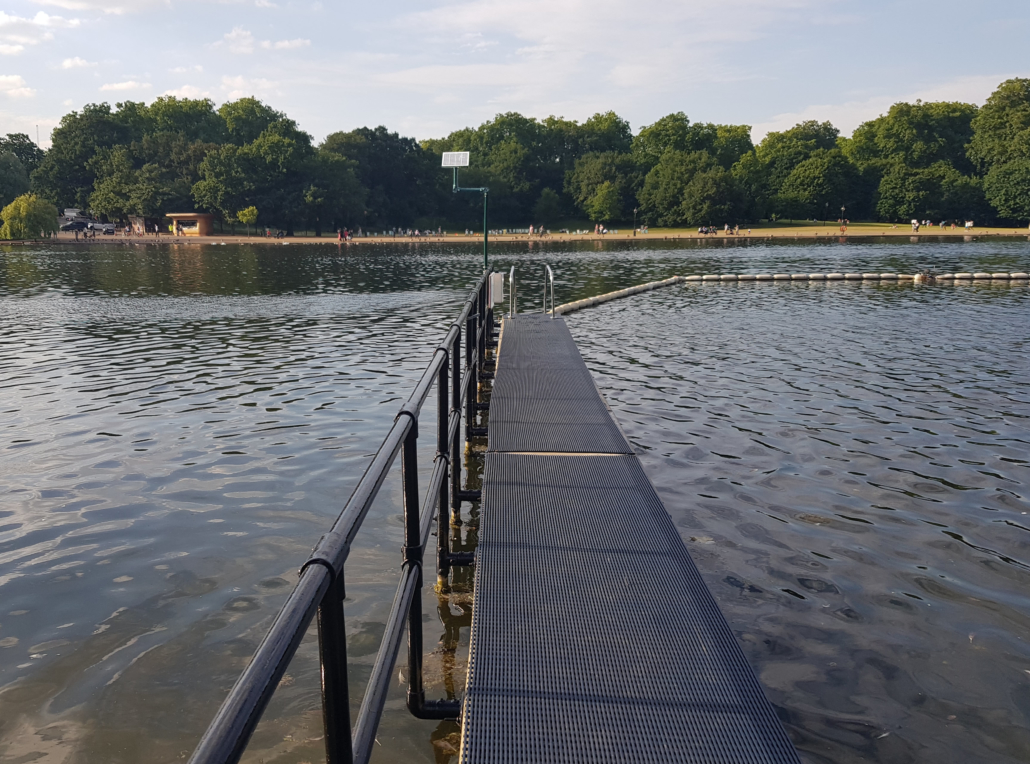 The
The 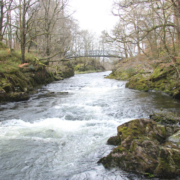
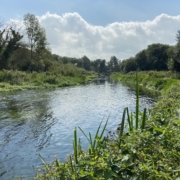
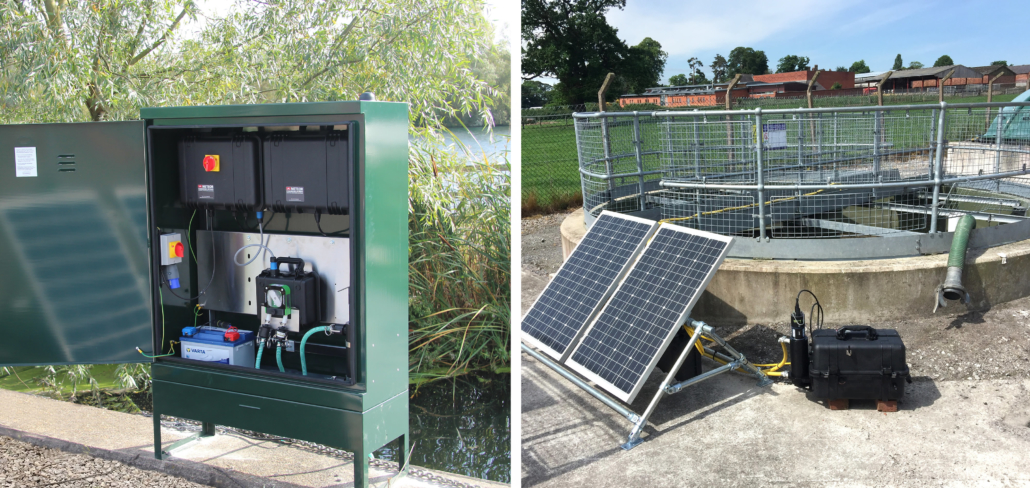 There are two main types of ESNET (Environmental Sensor NETwork)
There are two main types of ESNET (Environmental Sensor NETwork) 